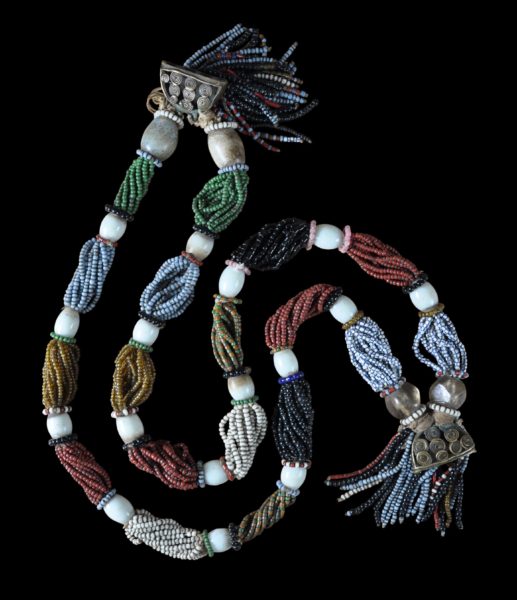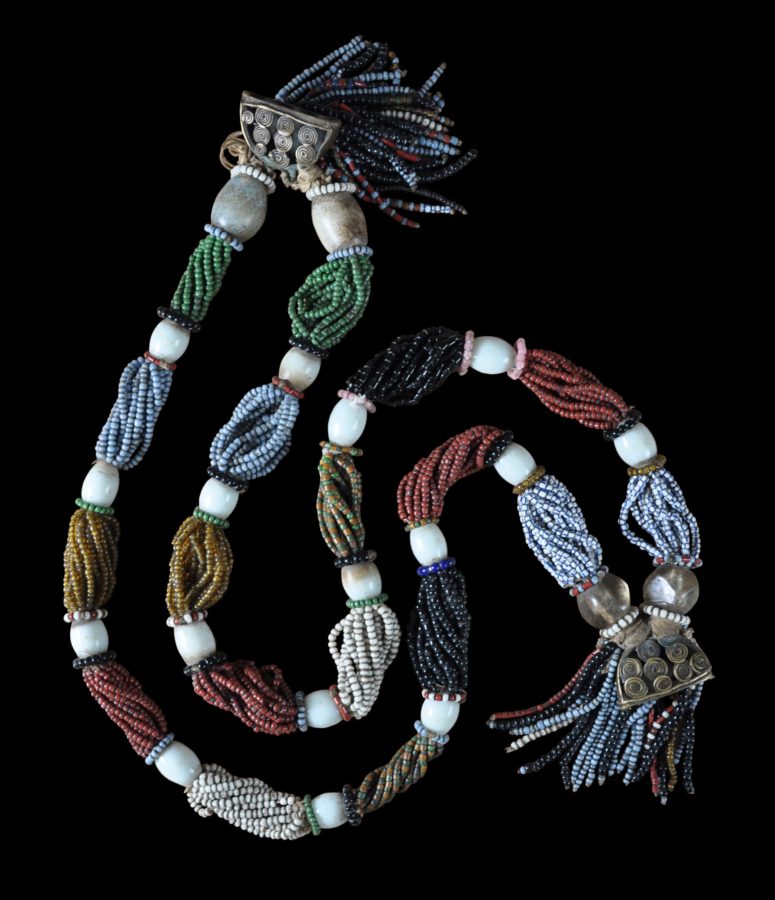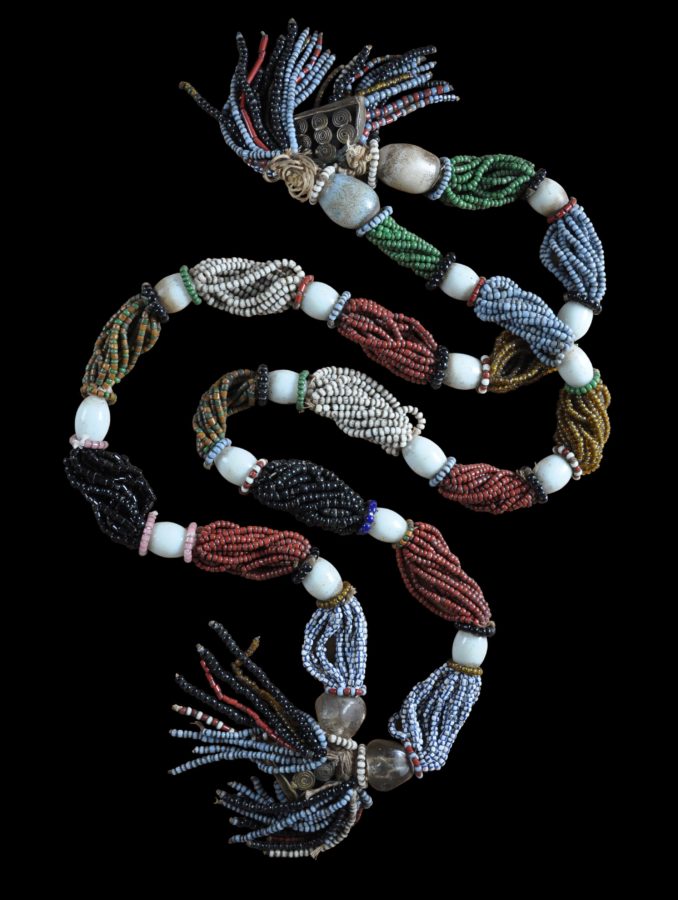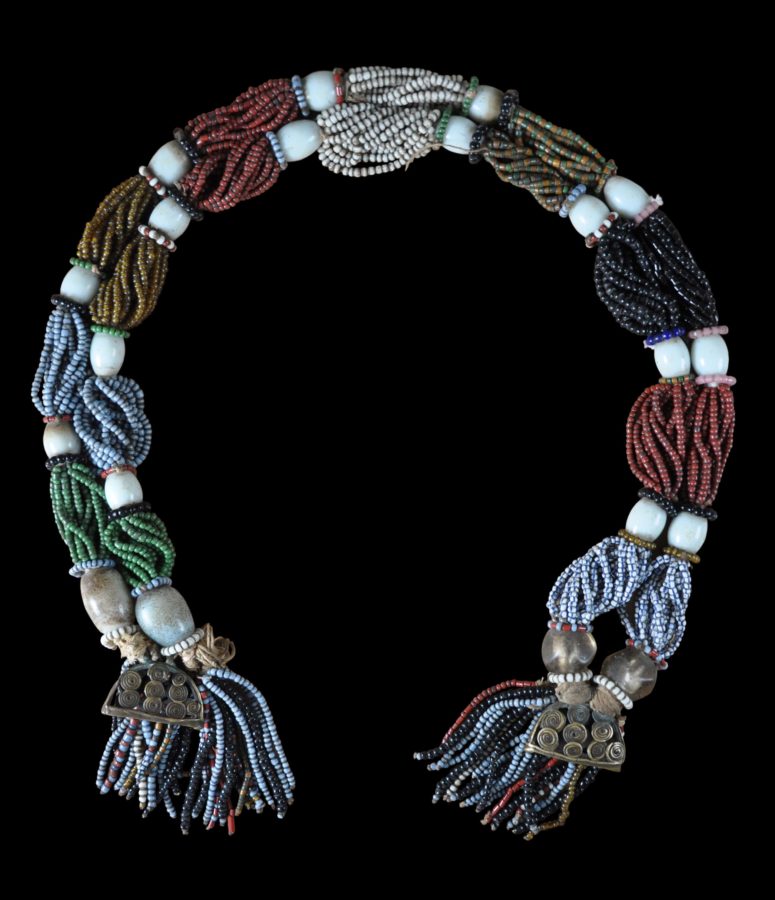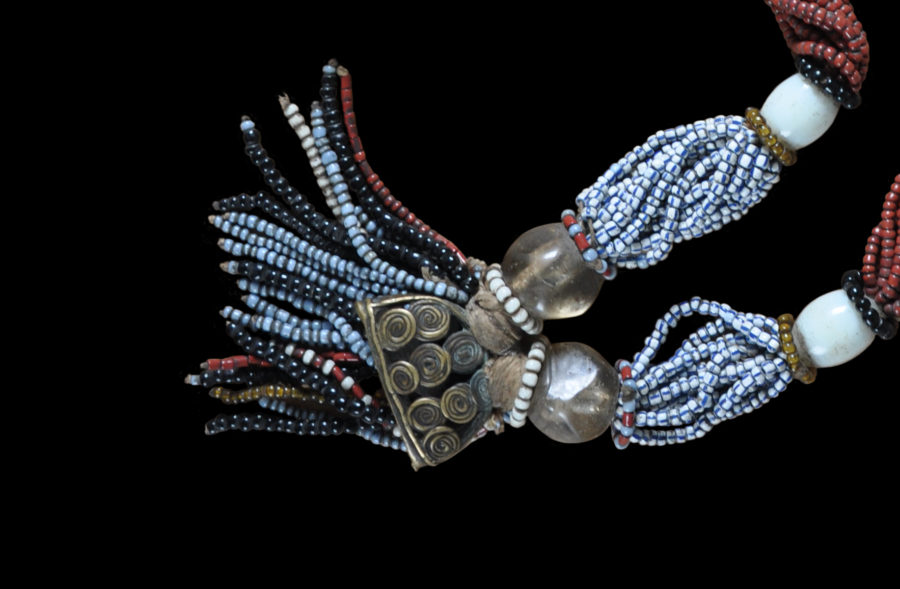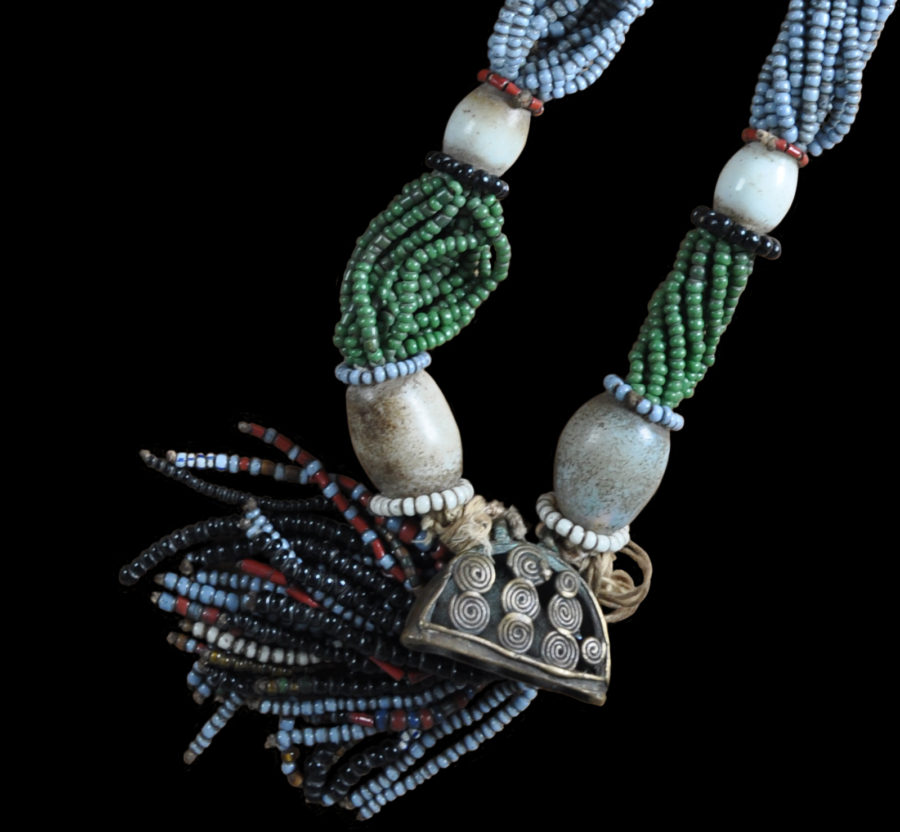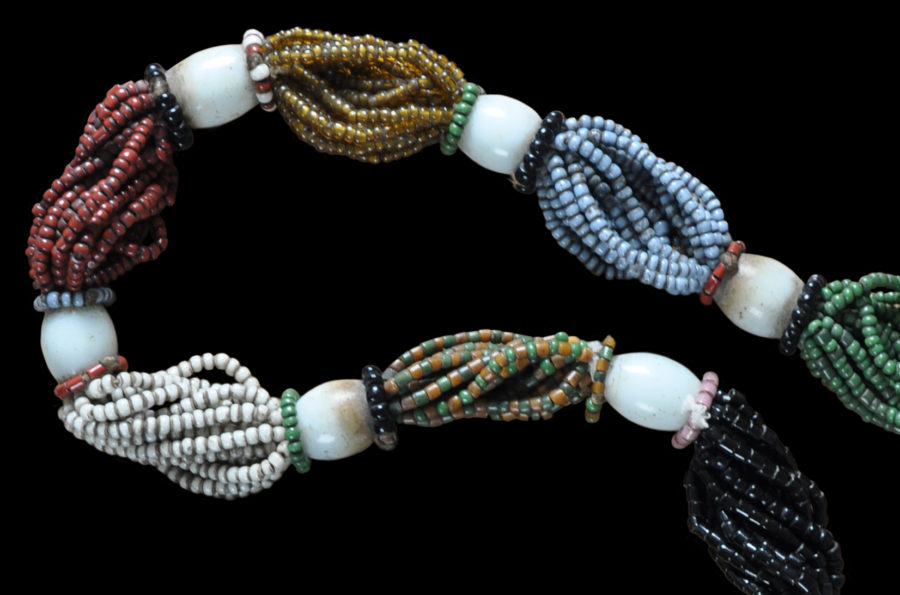This diviner’s necklace comprises an unusual combination and use of glass trade beads of different sizes, with vast brass elements.
The necklace has eighteen segments. They are divided into two parallel segments of eight matched strands of smaller glass trade beads, separated by large white glass beads, sixteen in total.
The glass beads help to date this necklace: none are later than about around 1880. There is a mixture of small, red-white heart beads produced in Venice for export to Africa and elsewhere, and large, white wound glassbeads (locally known as ‘Yoruba moon beads’, that were produced in Holland similarly for export markets.
All the beads are of a particular time suggesting that the necklace was not put together later from a mixture of old and older beads.
Two large light blue glass beads adorn one end of the necklace and two large translucent glass beads adorn the other. Each end has a beaded fringe and a brass pendant ornament that resembles a pouch. The brass ornaments can be interpreted as symbols of the central deity Ifa’s ability to interact with the divine world and the natural forces. They are also protective and talismanic to guard the diviner’s chest and back of the neck.
Beaded ornaments were prestigious and reserved for high-ranking members of Yoruba society. Beaded necklaces such as this example were worn by diviners (babalawo) because of their important role as the medium between human and god, which likens them to a king. To earn this privilege, babalawo go through rigorous training to be well-versed in oral literature (Odu Ifa) of divination.
Click here to see a video published by UNESCO on the Ifa divination system. In the video, a chanting diviner can be seen wearing using a necklace similar to the example here.
The necklace has been ritually used. All major sections are present. It has some trivial losses only but overall in very fine condition.
References
Bacquart, J. B., The Tribal Arts of Africa, Thames and Hudson, 1998.
Drewal, H. J., ‘Efe: Voiced Power and Pageantry’, in African Arts, Winter, vol.7, 1974.


